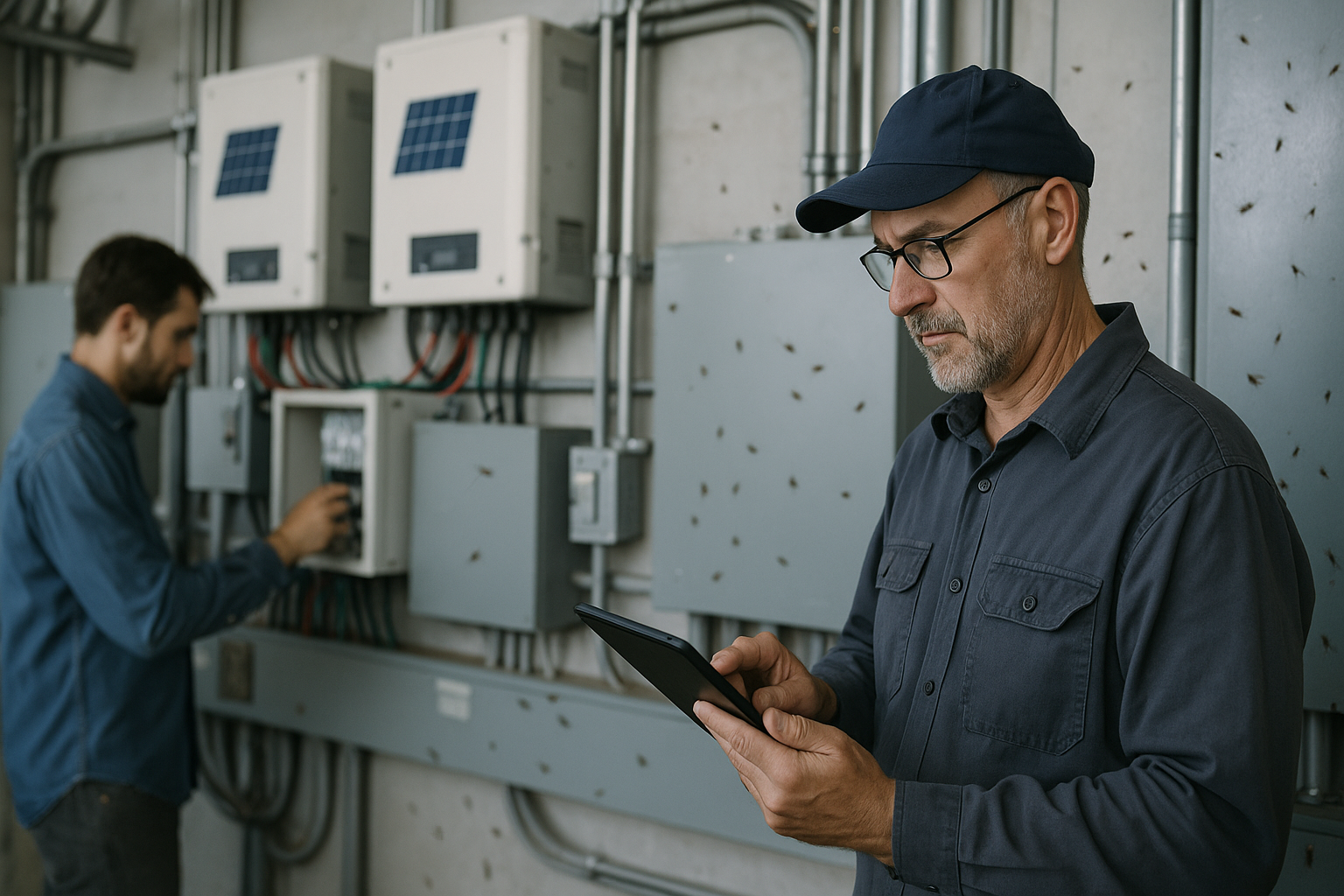When technology and nature meet
Insects are part of nature – but in technical systems they can cause significant problems.
In solar stations, distribution boxes, control cabinets, or network cabinets, many species find ideal conditions:
Heat, protection, and undisturbed cavities.
A seemingly small infestation can have serious consequences:
- Short circuits or contact problems caused by insect debris
- Malfunctions in sensors and control systems
- Dirty filters or ventilation units
- Overheating or fire hazard due to blocked cooling areas
Especially in unused technical rooms, an infestation often goes unnoticed – until visible damage occurs.
Typical causes of insect infestation
An infestation usually starts inconspicuously. Even the smallest openings are enough for insects to enter.
Common triggers:
- Heat sources: transformers, inverters, and distributors generate attractive temperatures
- Dust & moisture: ideal living conditions for insect nests
- Insufficient sealing: small gaps, cable entries, or ventilation grilles
- Light sources: attract flying insects, especially at night
Especially in spring and summer, when activity and populations increase, an infestation can spread massively within a few days.
Why conventional products are not a good choice
Classic sprays or insecticides are unsuitable for technical rooms.
They leave residues, can attack electronic components, and degrade air quality.
Moreover, many products are not approved for use in enclosed technical systems.
What you need instead is a mechanical, chemical-free solution that:
- controls flying and crawling insects,
- leaves no residues or moisture,
- and can be used permanently in sensitive environments.
Step-by-step: How to properly proceed in case of an infestation
1. Locate infestation
- Watch for dust buildup, dead insects, or fine cobwebs around cable entries.
- Also check ventilation grilles, baseboards, or wall niches.
2. Ensure safety
- Turn off power before taking measures.
- Secure and ventilate technical areas.
3. Control and combat without chemicals
Instead of using fog or sprays, physical systems are recommended that capture both flying and crawling insects.
💡 For flying insects:
👉 NK DECO LED-UV device with shatter protection (black)
This device is specially designed for sensitive environments and is well suited for technical rooms:
-
Attracts flying insects with targeted UV light,
-
catches them on a hygienic adhesive surface – without electric shock, shards, or odors,
-
is quiet in operation and low-maintenance.
A strategically placed LED-UV device above doors, ventilation, or wall surfaces can continuously reduce insect presence.
NK DECO LED-UV device with shatter protection
🪳 For crawling insects:
👉 Catchmaster Universal Insect Trap (96 pieces)
These traps are ideal for targeted monitoring and catching of crawling species such as ants, beetles, or spiders, even in tight spaces:
-
glue trap with odor-neutral attractant,
-
without poison or moisture,
-
easy to place under control cabinets, in cable ducts, or behind panels,
-
discreetly deployable in technical installations.
They are not intended for combating large infestations but serve as a monitoring and early warning system.
Catchmaster Universal Insect Trap 96 pieces
Both systems can be combined to cover flying and crawling insects equally – completely without chemicals or moisture.
Aftercare & prevention
- Regularly inspect rooms – especially during warm seasons.
- Seal cable entries to prevent new infestations.
- Clean filters and ventilation slots, avoid dust deposits.
- Regularly check UV devices and glue traps and replace if necessary.
- Minimize moisture – many insects are attracted by condensation water.
Conclusion: Chemical-free control for sensitive technical areas
An insect infestation in technical rooms can have serious consequences – from disruptions to costly repairs.
With LED-UV device and universal glue traps, a safe, residue-free, and low-maintenance solution is available today.
You can find more expert articles at: Kæferling Academy Guide






